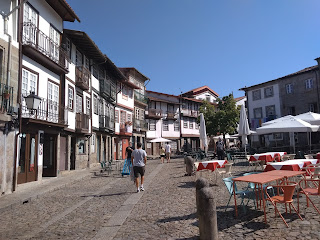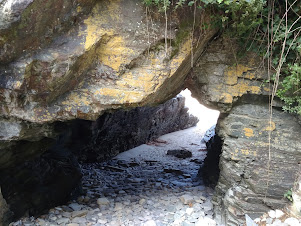When I first came to Spain, I was surprised at how big of a deal the Christmas Lottery seems to be here. All around there were signs in bars boasting ¨We have number 83194 for Christmas Lottery.¨ Months in advance! All sorts of clubs, associations, and places of employment often choose a Christmas lottery number for people to go in on together. At the school where I worked at the beginning of December there was a note in the teachers' lounge to sign up for the school's lottery number. Barely any teachers skipped out on buying the ticket. ¨This is going to be our year!¨
I wouldn't mind participating if tickets weren't so expensive. 20€ for a décimo. That translates to tenth, because with that participation you're entitled to one-tenth the prize amount. Obviously, the more numbers you have, the greater your odds. Which is why it's quite common for people to share with friends and family, having people buy numbers from different parts of the country. Someone I know spends around 200€ per year on the Christmas Lotto. And I'm sure he's not alone!
 |
| An example of a losing ticket |
There are people who even say the Christmas season starts here with the announcing of the Christmas Lottery numbers. Every year the numbers are announced the morning of December 22nd with pomp and circumstance. In a theater in Madrid, some fanatics wait outside for hours --sometimes dressed in costume--to get to see the number-calling in person. In a way, it reminds me of shoppers camping outside stores for Black Friday. Except instead of amazing deals, these people have their eyes set on thousands of euros. On stage, there are two huge, golden-caged balls. The bigger one has all of the possible number combinations. The smaller one has the prize amounts. The winning numbers are called out --or rather, sung out-- by children from a private school in Madrid. First a student sings the winning number, and the other sings the prize amount. ¨Mil eu-rooos,¨ is the most common. Every once in a while, however, a higher prize amount appears. There is one first prize, one second prize, one third prize, two fourth prizes, and eight fifth prizes worth 4 million, 1.25 million, 500,000, 200,000, and 60,000€ respectively. But of course the prize doesn't go to just one person. For every décimo, one tenth goes to you. So maybe the prize isn't as huge as the multimillion lotteries back home, but it is more distributed since lots more people than just ten can be winners.
Plus, if your number is one off from any of the winning numbers, you aren't a total loser. One digit up and one digit down also get (a much smaller) prize. And if you have the last two digits of the first three winning numbers, you also get a small amount. Also, all of the numbers within one hundred of the top four prizes get a fractional amount. In addition, any numbers that end in the same number as the first prize get the reintegro, or a refund of what they paid for the ticket. With so many chances to win, I might even be enticed to play next year!










































